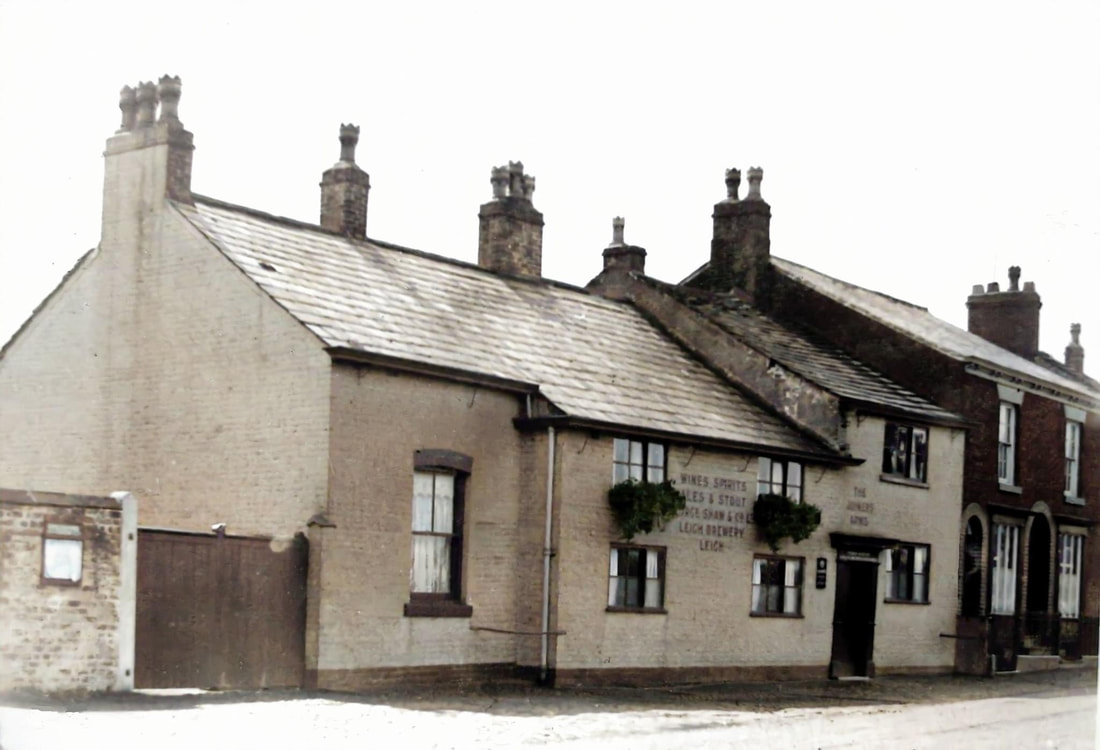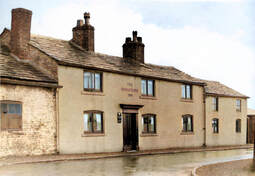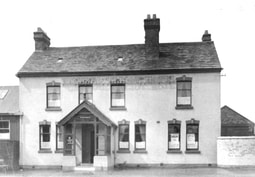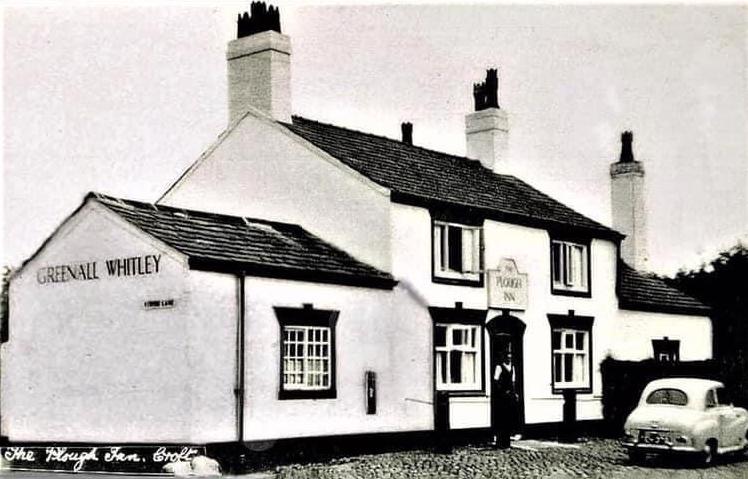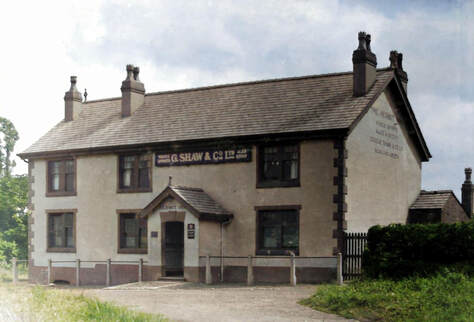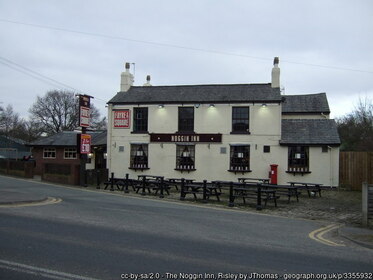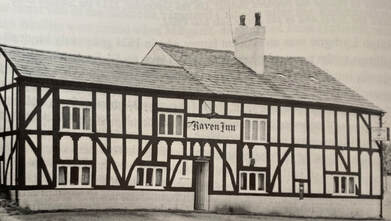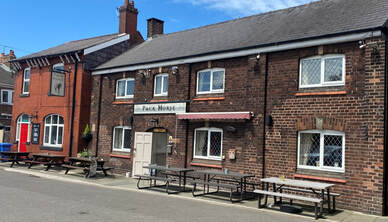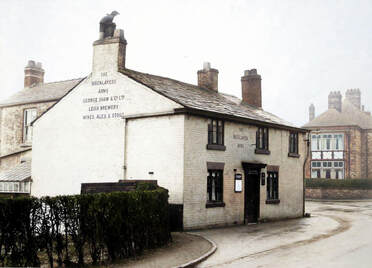Public Houses in Croft
|
Joiners Arms
This was situated on the land now occupied by 2 Abbey Close, at the junction with Lord Street. Thomas Norbury was the landlord in 1836, when it was also the meeting place for the local Female Friendly Society. Although the public house closed in 1939, the building was occupied until 1960 when the last occupant died. It was then demolished. It had a bowling green and a full publican’s licence. |
Horseshoe
General Elliot Hotel/Gibraltar Inn/Admiral Rodney Inn
Plough Inn
Hermit Inn
The Horseshoe, General Elliot and the Plough are still up and running today. The Horseshoe and the General Elliot both had bowling greens which are now car parks.
The Hermit Inn was in Hermitage Green, which was considered part of Croft until the 20th Century boundary changes. It has now been demolished.
Croft Brewery
Croft Brewery was established in Heath Lane and in the nineteenth century it provided beer to local public houses and to others, outside the Parish boundary.
The family responsible for the brewery for nearly 150 years was the Owen family. Reginald Owen is shown as purchaser of the property that was eventually to become the General Elliot, in 1785.
The decline of the brewery started in the early years of the twentieth century when the large breweries bought the local pubs, making them into tied houses. This meant they could no longer sell beer from Owen's brewery because they were required to sell beer from the large breweries to which they were now connected.
The Brewery ceased operation in the 1920's and the brewery chimney was knocked down in 1936. The building is still a private residence called ‘Brewery Farm’.
Information on Croft Brewery from 'CROFT The history of a village' by Alan Sharpe
The family responsible for the brewery for nearly 150 years was the Owen family. Reginald Owen is shown as purchaser of the property that was eventually to become the General Elliot, in 1785.
The decline of the brewery started in the early years of the twentieth century when the large breweries bought the local pubs, making them into tied houses. This meant they could no longer sell beer from Owen's brewery because they were required to sell beer from the large breweries to which they were now connected.
The Brewery ceased operation in the 1920's and the brewery chimney was knocked down in 1936. The building is still a private residence called ‘Brewery Farm’.
Information on Croft Brewery from 'CROFT The history of a village' by Alan Sharpe
Public Houses in Risley
Public Houses in
Culcheth & Glazebury
This list has been compiled from census returns, postal directories, maps and newspapers. There may be some mistakes, which I will be happy to correct. There may be some duplicates here, which have different names, but could be the same building. Without any further detail, I am unable to be more accurate. There is also a list of over 40 beerhouses without a name given, which may match up to existing listings in time. I would welcome any input from the public.
|
Fletcher's Hector Inn
A newspaper article mentions this pub, in Glazebury, being used to host a death inquest in 1891. |
Platt Inn
This is shown on the 1881 census on Platt Lane, Culcheth (later Warrington Road) with George Walworth as the landlord. |
Comfortable Gill Inn
Bury Lane/Warrington Road. There are no listings in the 19th Century under this name, though there are many beerhouses without a name on Bury Lane, which could be the same place. |
Grey Horse Inn
Bury Lane/Warrington Road. Robert Haworth was the landlord in 1861. |
|
Farmers' Arms
This was on Bury Lane/Warrington Road and is shown on the census returns for 1871, 1881 and 1891. Thomas Unsworth was in charge on all three returns. |
Paviors' Arms
This pub was on the 1881 and 1891 census for Warrington Road, Glazebury. The landlord was Abraham Winstanley on both returns. |
Grapes Inn
This is listed in the 1885 Postal Directory with James Marsh as the landlord and on the 1891 census with his wife Sarah as the Landlady. It is shown as both Glazebury and Newchurch, so it may have been on Warrington Road. It closed in 1906. |
Village Inn
This is shown in the 1885 Postal Directory and on the 1891 census as being on Warrington Road. Thomas and Sarah Ashton are in charge. |
The Public House In Winwick
The Alehouse Act & The Beerhouse Act
The Alehouse Act 1828, which established a general annual licensing meeting to be held in every city, town, division, county and riding, for the purposes of granting licences to inns, alehouses and victualling (provision of food) houses to sell excisable liquors to be drunk on the premises.
Two years later, the Beerhouse Act enabled any rate-payer to brew and sell beer on payment of a licence costing two guineas.
Beerhouses were not allowed to open on Sundays, or sell spirits and fortified wines; and any beerhouse discovered to be breaking these rules was closed down and the owner heavily fined.
The intention was to increase competition between brewers; lowering prices and encouraging people to drink beer instead of strong spirits.
Within eight years 46,000 new beerhouses opened and, because operating costs were so low, huge profits were often made. The combination of increasing competition and high profits eventually led to what has been described as a 'golden age of pub building' when many landlords extended or redeveloped their properties, adopting many of the recognisable features which still exist today.
Attempts to check the growth were made from 1869 onwards, by introducing magisterial control and new licensing laws, aimed at making it harder to obtain a licence and controlling drunkenness, prostitution and undesirable conduct on licensed premises.
Two years later, the Beerhouse Act enabled any rate-payer to brew and sell beer on payment of a licence costing two guineas.
Beerhouses were not allowed to open on Sundays, or sell spirits and fortified wines; and any beerhouse discovered to be breaking these rules was closed down and the owner heavily fined.
The intention was to increase competition between brewers; lowering prices and encouraging people to drink beer instead of strong spirits.
Within eight years 46,000 new beerhouses opened and, because operating costs were so low, huge profits were often made. The combination of increasing competition and high profits eventually led to what has been described as a 'golden age of pub building' when many landlords extended or redeveloped their properties, adopting many of the recognisable features which still exist today.
Attempts to check the growth were made from 1869 onwards, by introducing magisterial control and new licensing laws, aimed at making it harder to obtain a licence and controlling drunkenness, prostitution and undesirable conduct on licensed premises.

